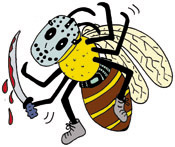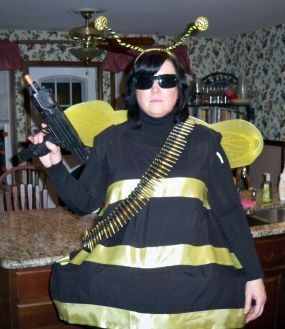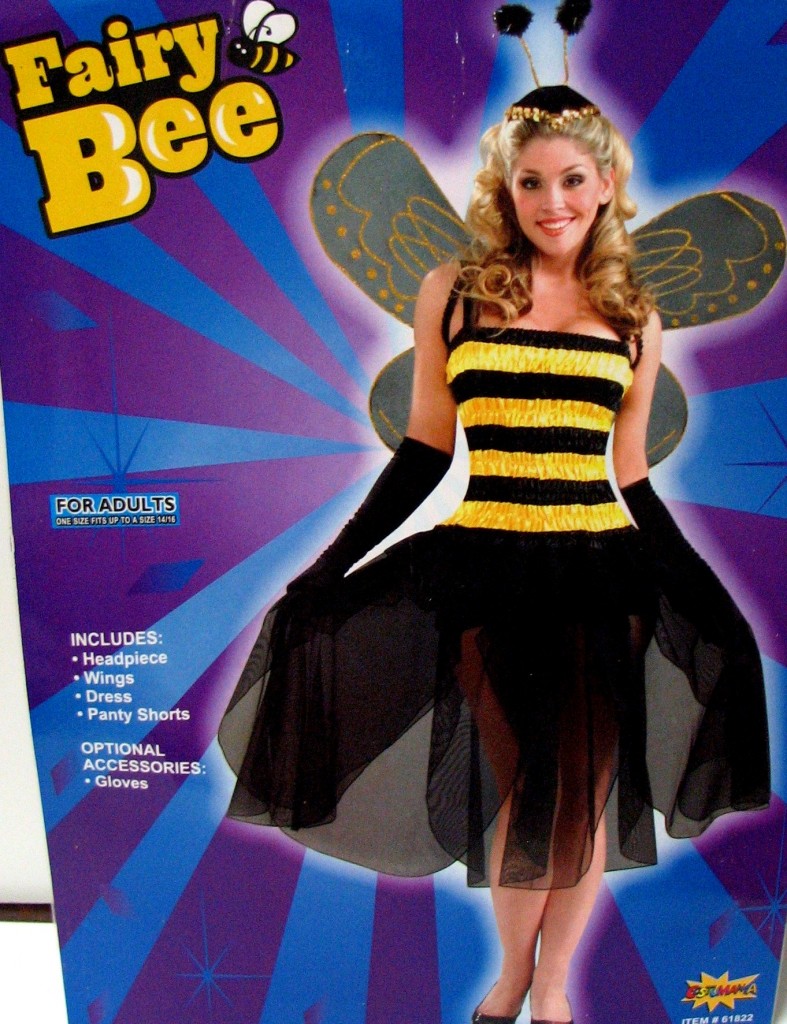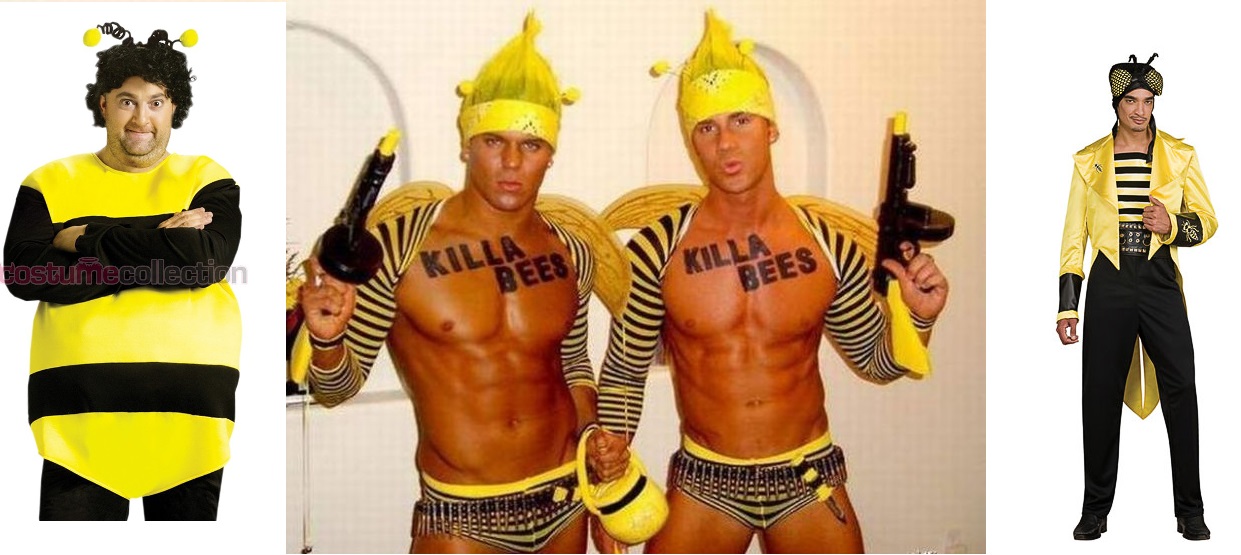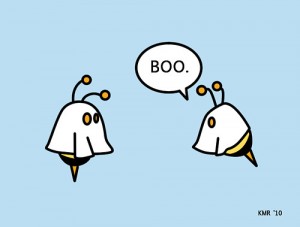
Did you know that honey bees are the inspiration for Halloween? The concept of trick or treating originated from dutch farmers in the 16th century. The farmers spent all summer toiling in their fields and they watched the bees travelling from flower to flower, collecting sweet nectar at each stop. Inspired, at the end of the harvest season, the farmers dressed up as bees and traveled from house to house asking for sweets and creating the first Halloween tradition.
Since the concept of Halloween wasn’t firmly established at that point, the farmers resorted to subtly threatening each household by saying “Trick or Sweet”. Since the farmers had finished harvesting, they spent the day travelling around countryside, performing ‘tricks’ such as throwing old cabbages and rotten eggs at houses which didn’t give them sweets. As this practice became more established, houses began to put pumpkins outside their doorstep to signal that they were finished their harvest and were participating in this new tradition.
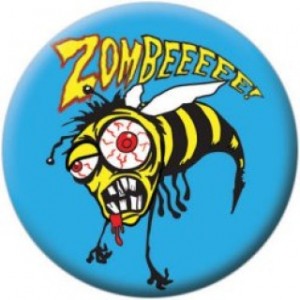
While that theory on the origins of Halloween was completely fabricated by my imagination, there are actually real life Zombie bees, (aka Zombees) roaming around at night in the US. A tiny parasitic fly, Apocephalus borealis, has recently switched from parasitizing bumble bees and wasps to parasitizing honey bees. The fly quickly lands on the back of a bee and injects its eggs inside the bees, which hatch and begin to eat the bee from inside, emerging once the bee has died.
As the larva begin to eat the bee, it literally becomes the walking dead with the parasites causing strange behaviour in the affected bees. These bees leave the hive during the night head out on a flight of the living dead, flying aimlessly around lights, often landing and stumbling around, while presumably moaning for brains. Normal bees only come out in the light of the sunshine, so if you see a honey bee out at night time, it could well be a zombee. If you do happen to find a zombee, you can report it to the scientists here and hopefully someone with a chainsaw or shotgun will come and deal with it. Just another threat honey bees are facing, the prospect of turning into zombies.
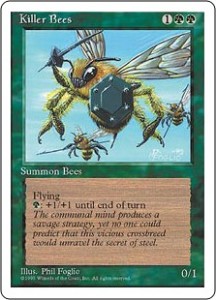
There’s also the killer bees. Killer bees are Africanised bees – they are honey bees that were bred with a strain of wild honey bee from Africa. As the wilds of Africa are a harsh environment, with lots of big beasts who would like to eat honey, the wild African bees developed a stronger defensive response in defending their hives. So when these bees were bred with regular honey bees, they result was a honey bee that was more protective of its hive. They were originally bred in Brazil in the 1950’s and escaped and have spread north through central America in into the southern United States.
Killer Bees is the name the media gave these bees, as it is sensational and plays on the fear of being stung, but in reality, they are pretty much just regular bees. In Brazil and across Latin America, Africanized bees have become the bees of choice for beekeepers.
“Africanized bees are not giant bees with deadly stings. The sting of the Africanized bee is no more potent than any other variety of honey bee, and although they are similar in appearance to European bees, they actually tend to be slightly smaller and darker in color. Africanized bees do not roam the countryside looking for people to attack.”
Killer Bees should also not be confused with “Killa” Bees. Killa Bees are the mascot of the Wu Tang Clan and they are nothing to F with.
Bees are not totally innocent though, they do occasionally kill people. In the US each year between 40-50 people die each year from anaphylactic allergic reactions arising from stings from bees, hornets and wasps, making them twice as deadly as lawnmowers (26 deaths/year) and roughly half as deadly as ladders (122 deaths). In Canada, 4 or 5 people die each year from stings. In the UK, wasp, hornet and bee stings kill as many people as terrorists, which sounds bad, but actually isn’t. In all of these cases most of these stings are from wasps, since wasps are assholes. Bees die when they sting you, they don’t do it just for kicks. So even though it’s Halloween, there is no reason to bee afraid of bees.
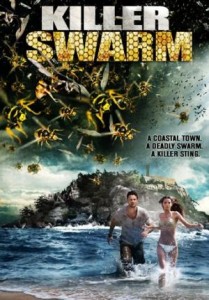
Just to clarify, those are wasps.
Bee costumes are beecoming more and more popular for Halloween these days though. Just in case you don’t have a costume sorted out, here is a compilation of some of this season’s hottest bee outfits to give you some ideas:
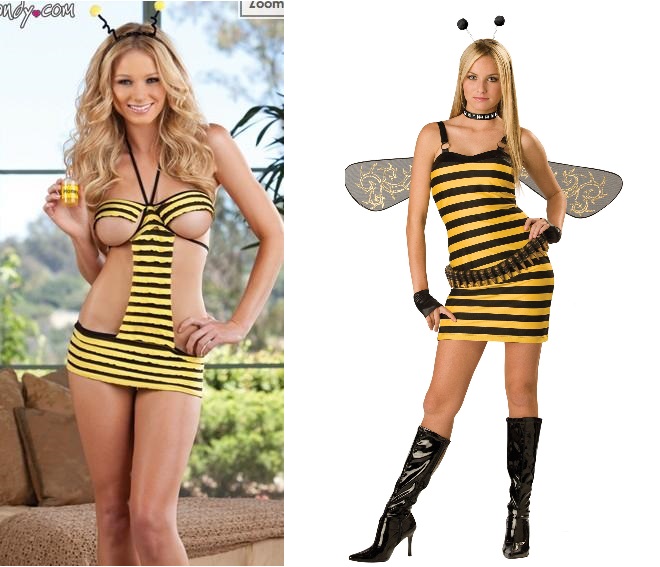
Female “Sexy” Bee, there are hundreds of options, because Halloween is really just an excuse to create a bastard child of lingerie and costumes, and bees are sexy. The entire costume on the left uses $1.28 in fabric if you want to make it yourself and are on a budget.
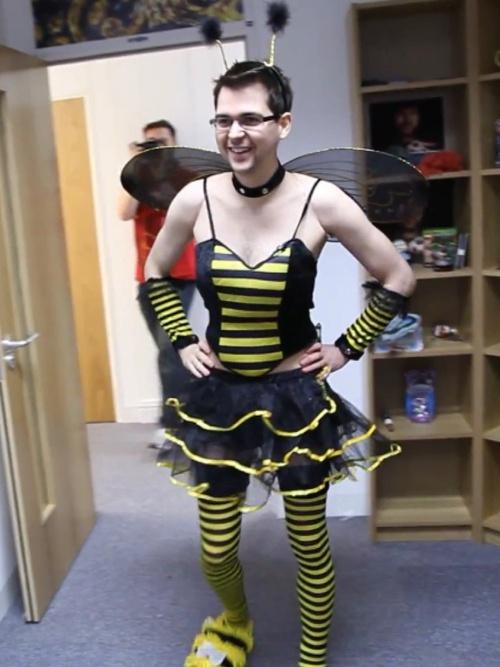
Transgendered “Sexy” Bee. I need to start writing about honey again.
Anyways, whatever way you’re aligned, keep an eye out for zombees, don’t worry about killer bees and have a wonderful time trick or sweeting.
Happy Halloween!
-E
